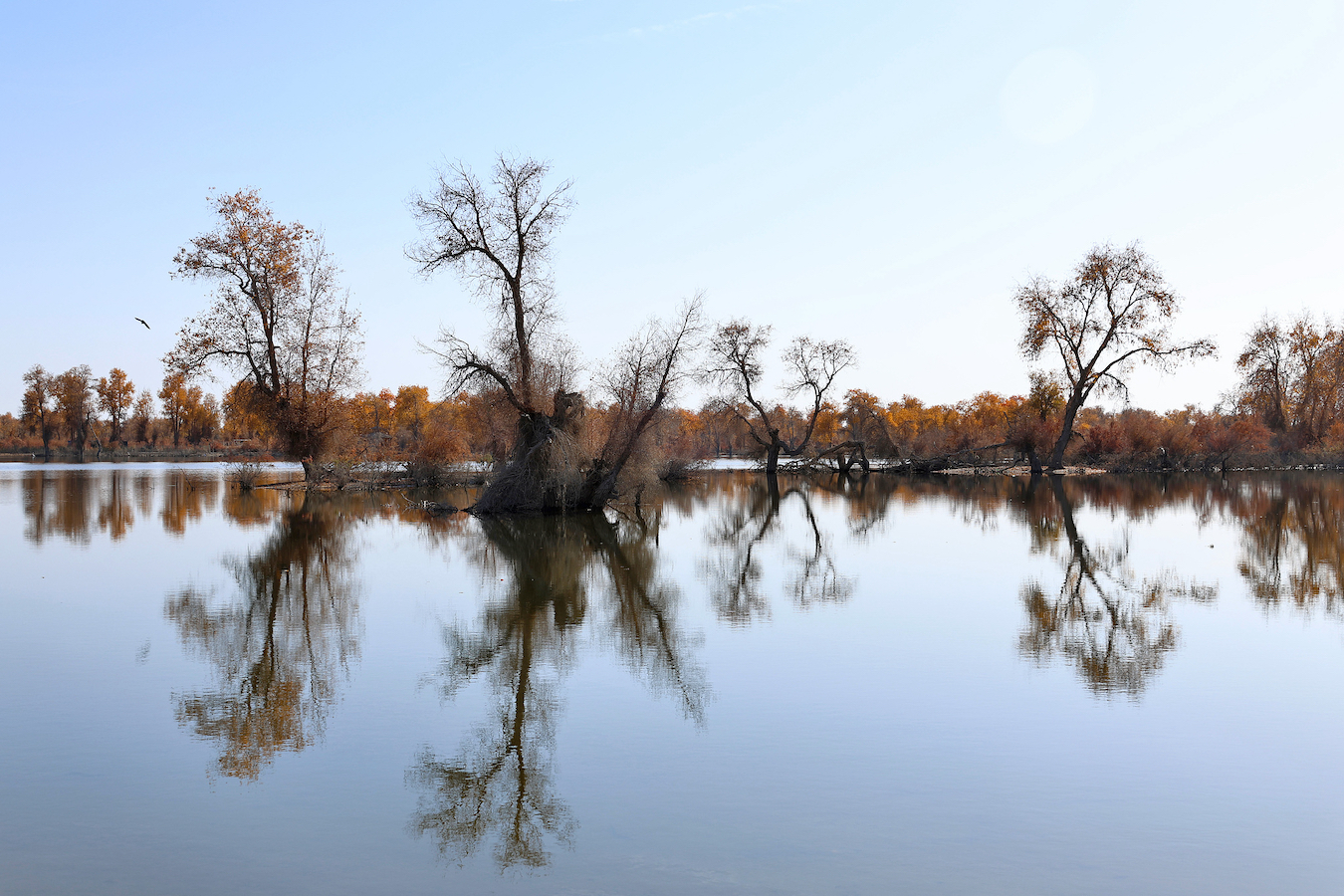The Taklimakan Desert, known as the "Sea of Death," has been completely encircled with a sand-blocking green belt stretching 3,046 kilometers, according to local authorities in northwest China's Xinjiang Uygur Autonomous Region.
On Thursday morning, several plant species, including desert poplar, saxaul and red willow, were planted on sandy land in Yutian County on the southern edge of the desert, marking the completion of the final stretch of the green belt, according to the Xinjiang regional forestry and grassland bureau.

Desert poplars along the Tarim River on the northern rim of the Taklimakan Desert, northwest China's Xinjiang Uygur Autonomous Region, November 18, 2024. /CFP
Desert poplars along the Tarim River on the northern rim of the Taklimakan Desert, northwest China's Xinjiang Uygur Autonomous Region, November 18, 2024. /CFP
The Taklimakan covers 337,600 square kilometers and its circumference measures 3,046 kilometers, making it the largest desert in China and the second-largest drifting desert in the world.
It has taken more than 40 years to fully enclose the desert with a green belt. By the end of 2023, a 2,761-kilometer-long green belt connected scattered oases, leaving only the final, most challenging section.
This final stretch, approximately 285 kilometers long, runs through the southern part of the desert and faces the most severe wind and sand hazards. Since this year, Xinjiang has taken targeted and scientific measures to close this gap.
Alongside the green belt, efforts have been made to promote the development of sand industries, such as the growing of cistanche and other crops, to benefit local residents.

Cistanche in harvest in Kuqa City, Aksu Prefecture, northwest China's Xinjiang Uygur Autonomous Region, September 18, 2024. /CFP
Cistanche in harvest in Kuqa City, Aksu Prefecture, northwest China's Xinjiang Uygur Autonomous Region, September 18, 2024. /CFP
Tuhti Rahman, director of the Xinjiang regional forestry and grassland bureau, said that the belt functioned as an ecological barrier and would guarantee the stability of agricultural production, improve the urban living environment and promote Xinjiang's economic and social development.
Xinjiang will further consolidate the green belt, Tuhti Rahman added.
The Taklimakan Desert control project is a part of China's Three-North Shelterbelt Forest Program (TSFP), the world's largest afforestation program to tackle desertification.

The TSFP in Daqing City, Heilongjiang Province, northeast China, July 20, 2024. /CFP
The TSFP in Daqing City, Heilongjiang Province, northeast China, July 20, 2024. /CFP
The TSFP was launched in 1978 and is scheduled to be completed by 2050.
In June 2023, China proposed to turn the TSFP into a fully functional and unbreakable "green Great Wall" and ecological security barrier in northern China.
Since 1978, China has expanded its afforestation area by 32 million hectares under the TSFP. The afforestation area under the program is projected to encompass over 4 million square kilometers across 13 provincial-level regions by 2050, accounting for 42.4 percent of the country's total land area.
Over the past 46 years, the forest coverage rate of the TSFP-covering areas has risen from 5.05 percent to 13.84 percent. Progress has been made in desertification and soil erosion control, while about 30 million hectares of farmland have been protected.
(Cover: The green belt is placed in the Taklimakan Desert in Yutian County, northwest China's Xinjiang Uygur Autonomous Region, November 27, 2024. /CFP)
Source(s): Xinhua News Agency




